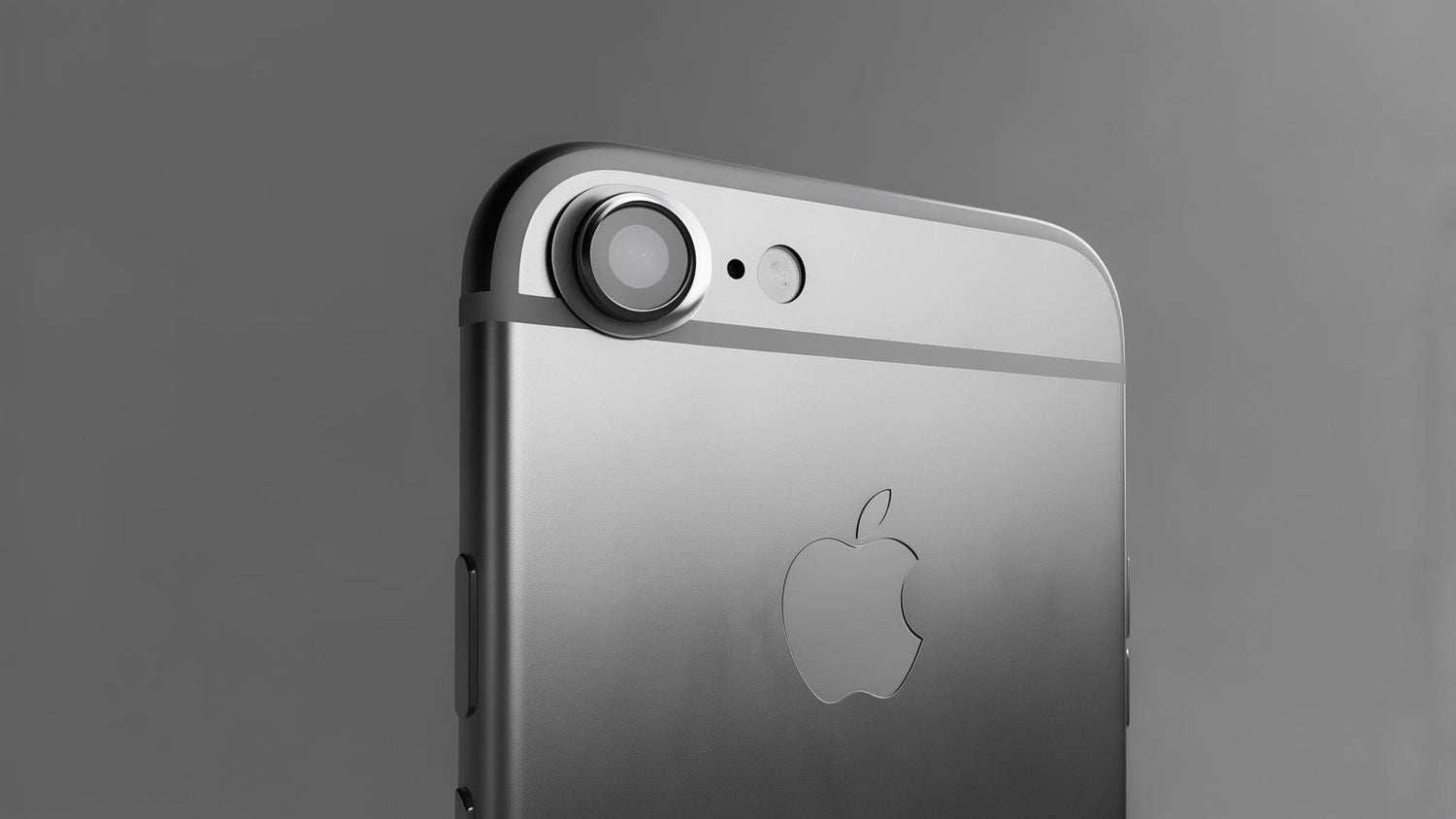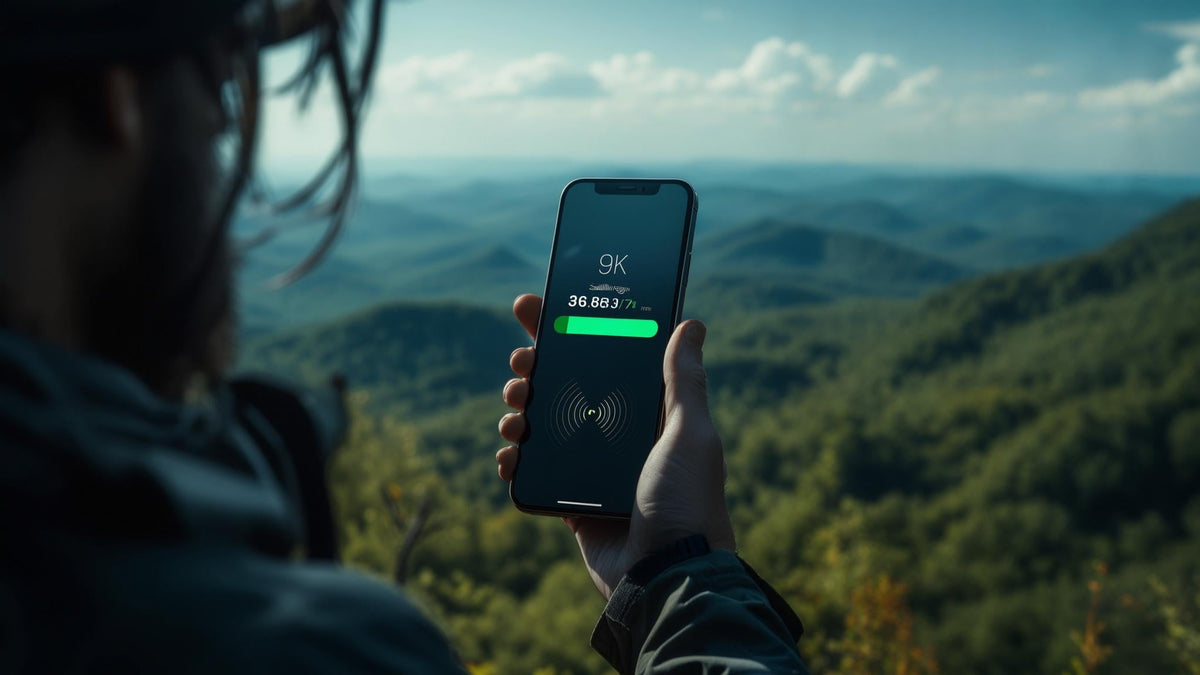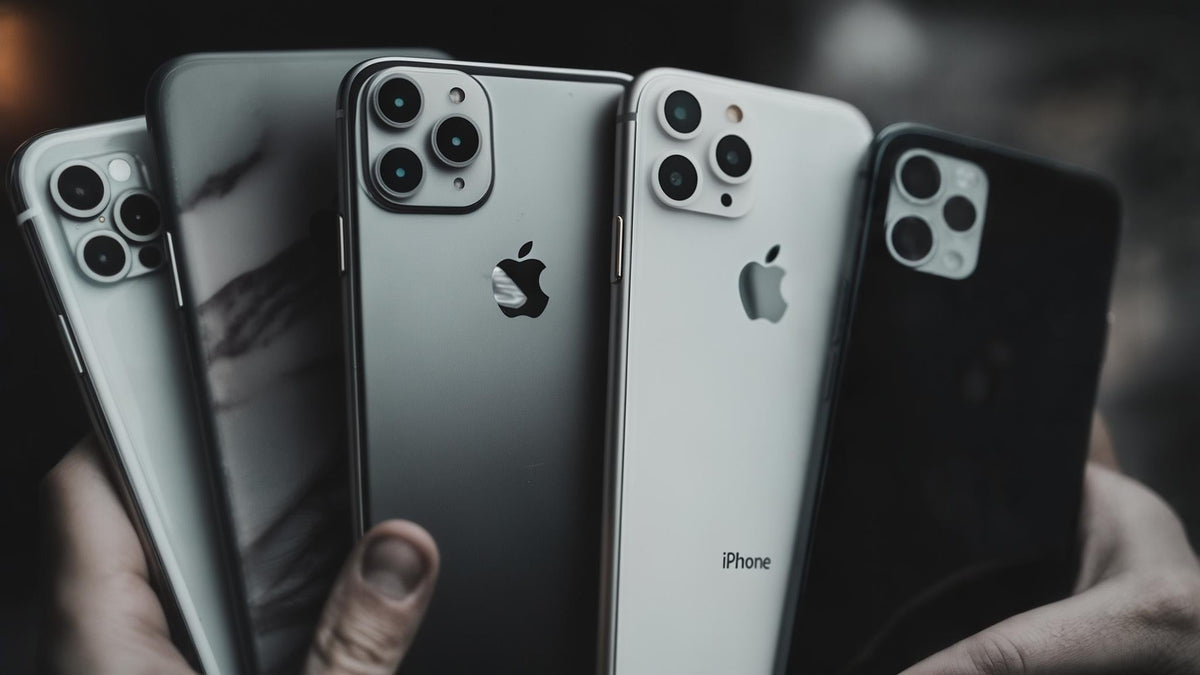Table of Contents
The Reality Check: Only 2 iPhones Are Actually Titanium
Why I Actually Love My Titanium iPhone
Titanium vs Everything Else: The Real Differences
Living With Titanium: The Good, Bad, and Unexpected
Should You Buy One? And Which One?
What's Coming Next
Rokform Protection Solutions
Final Thoughts
TL;DR
Only iPhone 15 Pro and iPhone 15 Pro Max feature titanium construction - that's it
Titanium reduces weight by 19g compared to stainless steel Pro models but costs $200-300 more
The material offers 4x better scratch resistance and eliminates fingerprints
Standard iPhone models still use aluminum, not titanium
MagSafe actually works better with titanium frames
Future iPhone 16 Pro series will likely continue using titanium
The back glass still cracks just as easily - titanium isn't magic
The Reality Check: Only 2 iPhones Are Actually Titanium
Let's start with the truth: despite what clickbait headlines might suggest, there aren't 25 titanium iPhones. There are exactly two - the iPhone 15 Pro and iPhone 15 Pro Max. That's it.
Apple introduced Grade 5 titanium construction exclusively to these Pro models, leaving everyone else with aluminum. So if you're wondering which iPhone is titanium, the answer is simple: only the expensive ones.
iPhone 15 Pro (6.1-inch) - The Smaller Titanium Option
After months with the iPhone 15 Pro, I'll be straight with you - the titanium thing isn't just marketing hype. It actually feels different. At 187g, it's 19g lighter than the iPhone 14 Pro's stainless steel frame, and you notice it immediately.
The four finishes (Natural, Blue, White, and Black Titanium) all have this brushed texture that feels premium without being slippery. The edges are incredibly smooth and solid - it's one of those things you notice every time you pick it up.
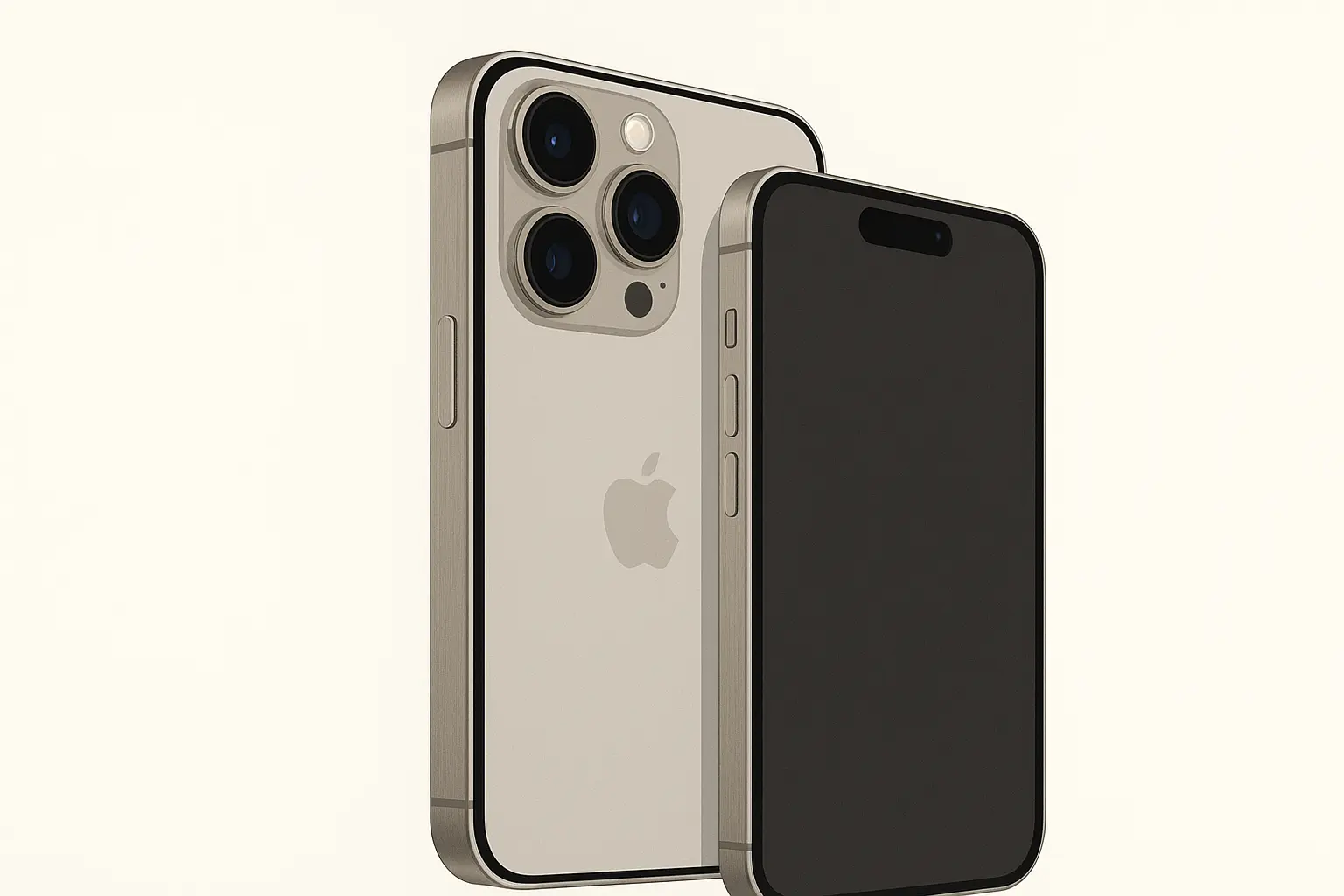
iPhone 15 Pro Max (6.7-inch) - Maximum Screen, Premium Materials
The Pro Max takes everything good about the smaller Pro and scales it up. At 221g, this 6.7-inch phone feels lighter than you'd expect. I've watched people pick it up for the first time and do a double-take.
Same Grade 5 titanium construction, same four finishes, but more screen real estate. The brushed texture provides excellent grip, though let's be honest - you're probably using both hands with this size anyway.
Model |
Weight |
Screen Size |
Available Colors |
Price Premium |
|---|---|---|---|---|
iPhone 15 Pro |
187g |
6.1" |
Natural, Blue, White, Black Titanium |
$200-300 |
iPhone 15 Pro Max |
221g |
6.7" |
Natural, Blue, White, Black Titanium |
$200-300 |
iPhone 14 Pro (Steel) |
206g |
6.1" |
Space Black, Silver, Gold, Deep Purple |
Baseline |
iPhone 14 Pro Max (Steel) |
240g |
6.7" |
Space Black, Silver, Gold, Deep Purple |
Baseline |
Why I Actually Love My Titanium iPhone
Look, I was skeptical about paying extra for a different metal. But after using both stainless steel and titanium iPhones, there are real differences that matter in daily use.
No More Fingerprint Nightmare
Remember the iPhone 14 Pro's stainless steel frame? That fingerprint magnet that required constant wiping? Titanium completely fixes that problem. I used to carry a microfiber cloth specifically for cleaning my phone - now I don't even think about it.
The brushed titanium finish naturally resists fingerprints and stays clean throughout the day. For anyone who handles their phone during meetings or professional situations, this alone justifies the upgrade.
It Actually Feels Different
The weight reduction isn't dramatic on paper, but it's noticeable in real use. I can use my iPhone 15 Pro one-handed for much longer without fatigue. The material has this density that feels substantial without being heavy.
My buddy who works construction used to go through aluminum phones every six months. His titanium iPhone? Still going strong after a year and a half of job site abuse.
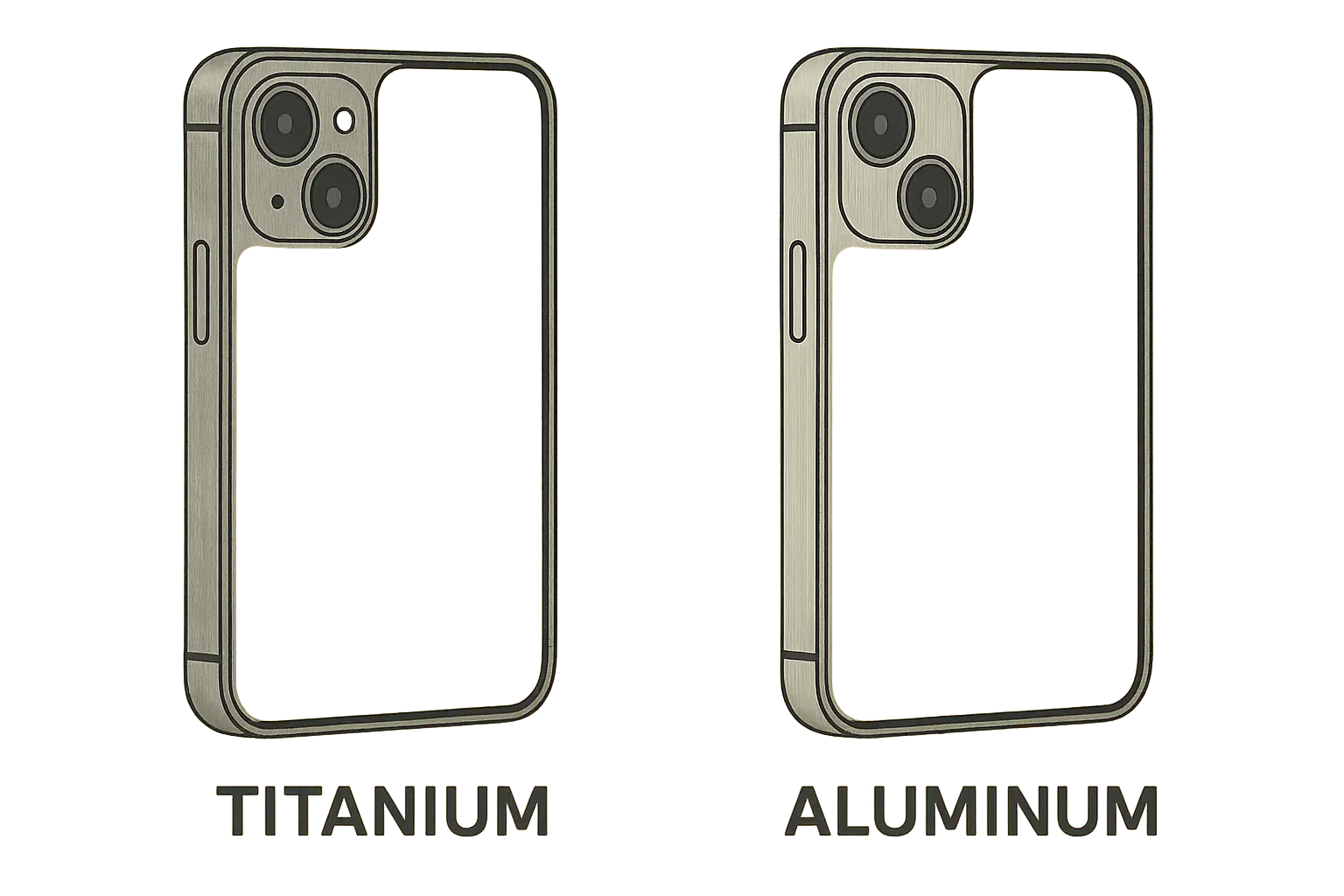
MagSafe Actually Works Better
This surprised me: MagSafe performance improves with titanium frames. The material doesn't interfere with magnets like steel did, so charging is more consistent and accessories connect more securely.
With my old stainless steel iPhone, I sometimes had to adjust position on my MagSafe charger to get optimal speeds. The titanium iPhone just clicks into place and starts charging at full speed immediately.
Understanding what is MagSafe helps users maximize these wireless charging advantages that titanium construction provides.
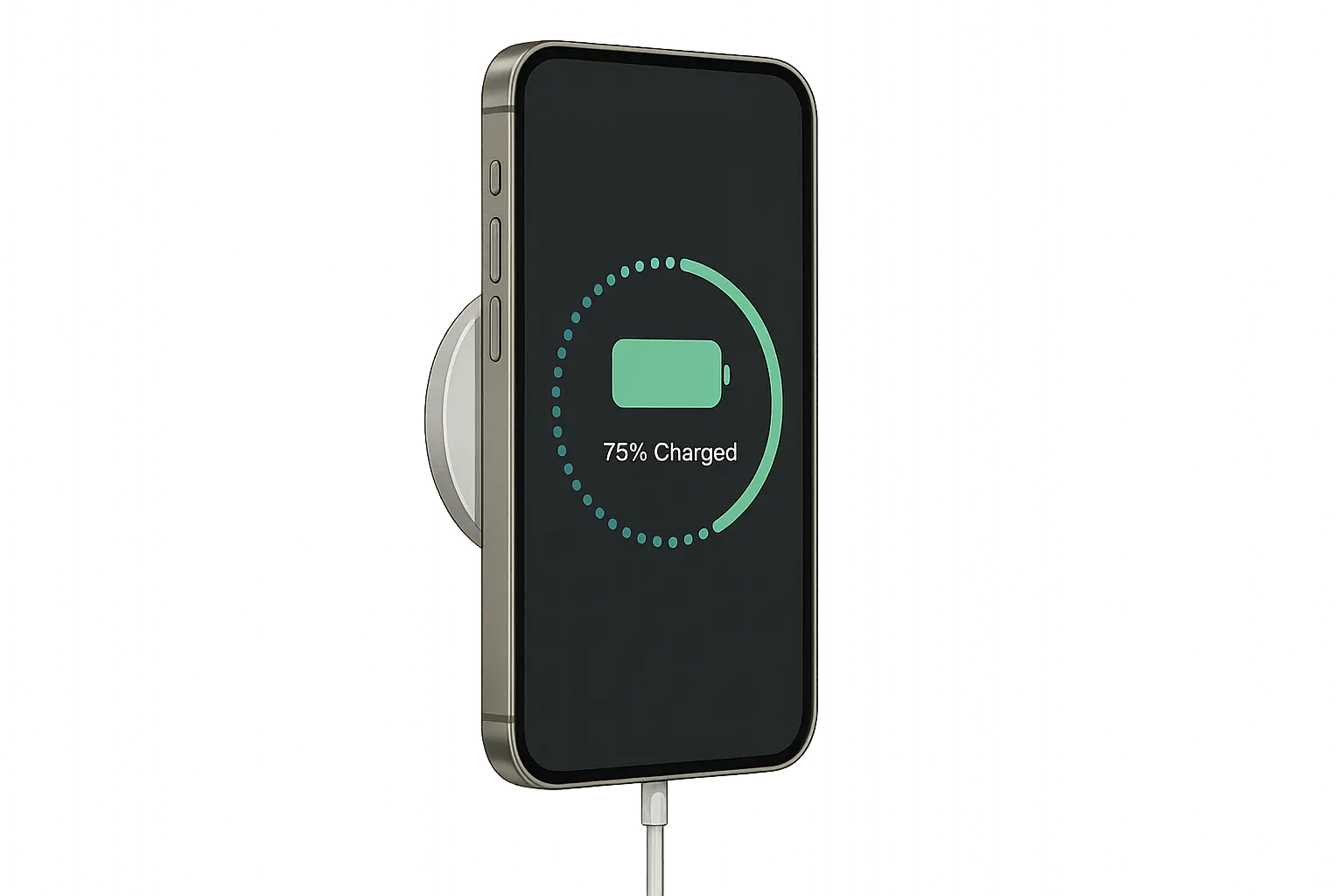
Titanium vs Everything Else: The Real Differences
Titanium vs Aluminum
Standard iPhone models stick with aluminum because it keeps costs reasonable. But once you've experienced titanium, aluminum feels cheap. We're talking about 4x better scratch resistance with titanium.
I've carried my iPhone 15 Pro in the same pocket as my keys for months, and the frame still looks pristine. Try that with an aluminum iPhone and you'll have scratches within the first week.
The weight difference isn't huge, but the premium feel is unmistakable. Aluminum weighs less, but titanium has this density that communicates quality the moment you pick it up.
For users seeking comprehensive protection, exploring the best iPhone cases ensures maximum durability regardless of frame material.
Titanium vs Stainless Steel Performance
The iPhone 14 Pro's glossy stainless steel showed every single smudge and required constant maintenance. Titanium eliminates that frustration while actually reducing weight.
Here's a real example: A business professional I know constantly handled their iPhone 14 Pro during client meetings. They had to wipe fingerprints multiple times per day to maintain a professional appearance. With their new titanium iPhone 15 Pro, they handle their device throughout meetings without any visible fingerprint accumulation.
How It Works with Ceramic Shield
Apple engineered titanium to work with Ceramic Shield front glass. The titanium frame absorbs and distributes impact forces while the glass handles direct display impacts.
However, let's be honest - the back glass remains the weak point. That's still regular glass that can shatter, so don't think titanium makes your phone invincible.
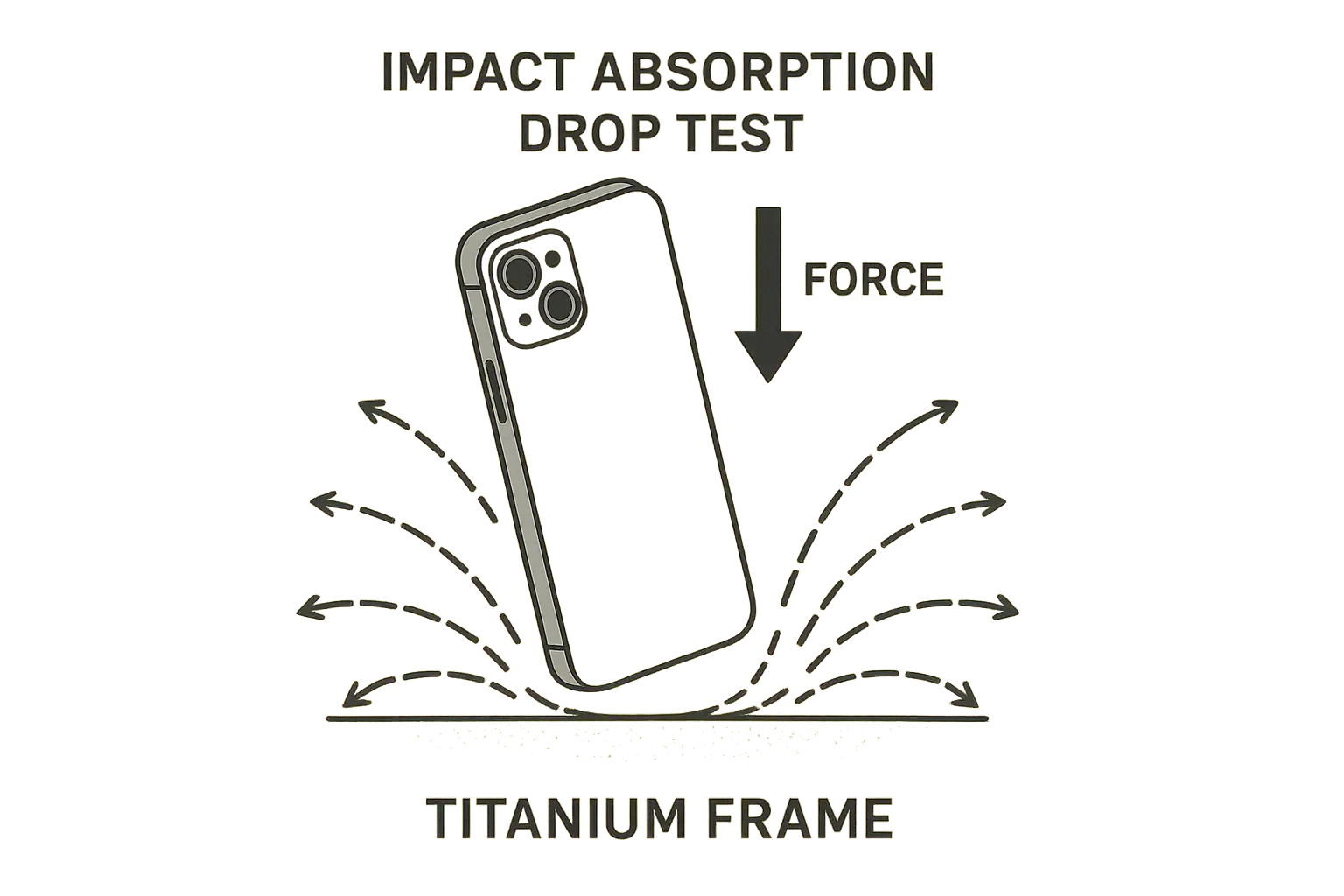
Material Property |
Titanium |
Stainless Steel |
Aluminum |
|---|---|---|---|
Scratch Resistance |
4x Superior |
Good |
Moderate |
Fingerprint Resistance |
Excellent |
Poor |
Good |
Weight (Pro Max) |
221g |
240g |
203g (Standard) |
Heat Dissipation |
Superior |
Good |
Excellent |
Cost Premium |
High |
Medium |
Low |
Living With Titanium: The Good, Bad, and Unexpected
The Good
Better thermal management: Gaming sessions and 4K video recording put phones through thermal stress. Titanium helps manage device temperature during intensive tasks better than expected. The phone stays cooler to the touch even during extended use.
A mobile photographer shooting 4K ProRes video for 30 minutes continuously will notice their iPhone 15 Pro maintains more consistent performance and cooler surface temperatures compared to previous stainless steel models.
Superior scratch resistance: After months of daily use, my titanium iPhone still looks remarkably fresh. Keys, coins, and other pocket items that typically cause scratches barely mark the titanium surface.
Natural aging: The brushed titanium finish develops a subtle patina over time that actually enhances rather than detracts from its appearance. Your phone becomes uniquely yours through natural aging.
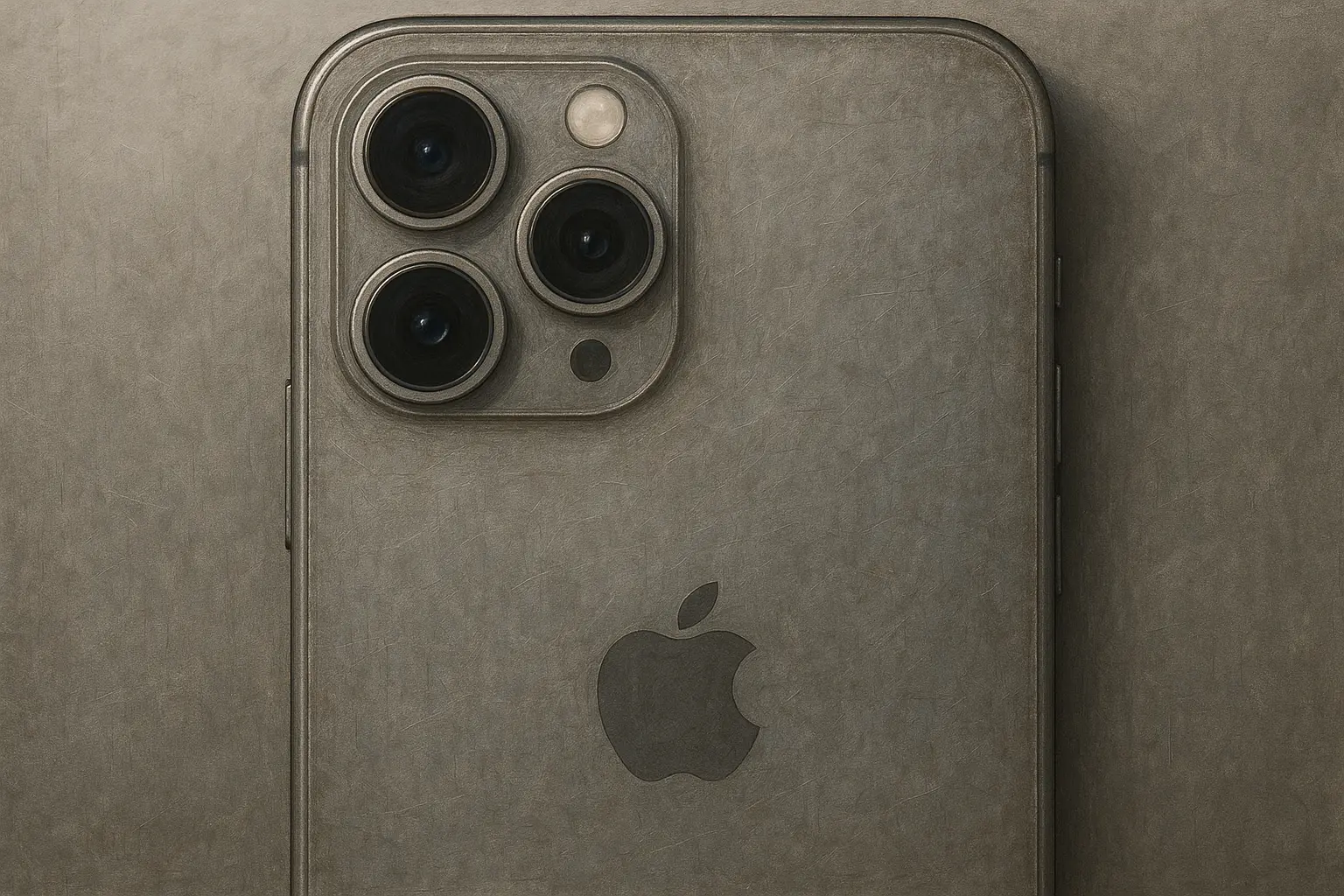
The Bad
Higher repair costs: Titanium frame repairs require specialized techniques and cost more than aluminum alternatives. The material's properties make it more challenging to work with.
However, titanium's superior durability means repairs are needed less frequently, often offsetting higher individual repair costs over the device's lifetime.
Still not indestructible: The screen and back glass remain vulnerable. Professional users requiring maximum protection should consider rugged iPhone cases that complement titanium's inherent durability.
Premium pricing: You're paying $200-300 extra for something most casual users won't fully appreciate. The benefits are real, but they're incremental improvements rather than revolutionary changes.
The Unexpected
Environmental considerations: Titanium mining and processing have environmental impacts, though the material is highly recyclable and durable. Extended device lifespans through increased durability can reduce overall environmental impact.
Professional applications: First responders, military personnel, and outdoor professionals particularly benefit from titanium construction. EMTs I've spoken with switched specifically because their previous phones couldn't handle constant exposure to cleaning chemicals and rough handling.
Signal performance: I was initially concerned about signal reception, but cellular, Wi-Fi, and Bluetooth connections perform as well as or better than previous materials. The titanium doesn't create interference issues.
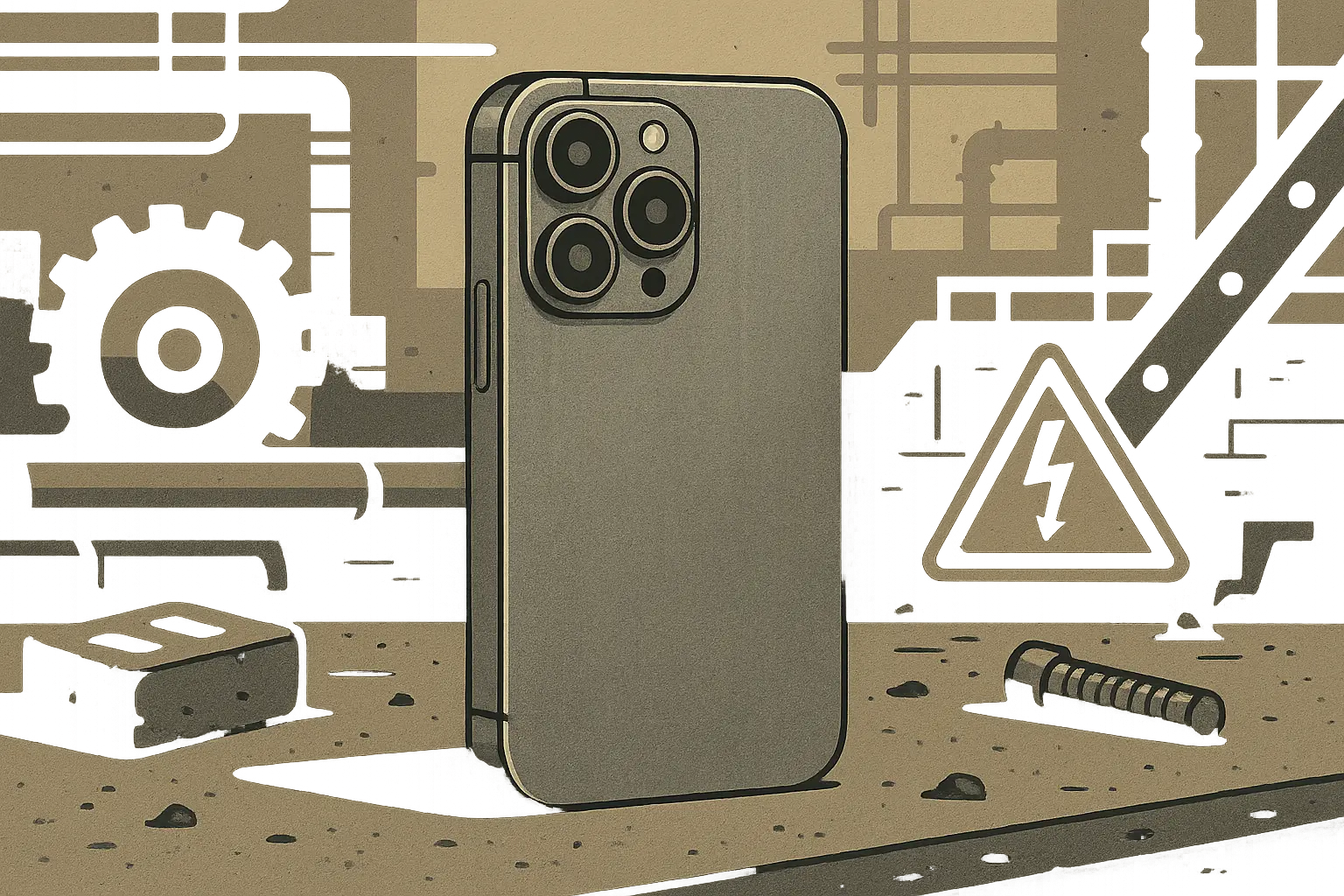
Should You Buy One? And Which One?
Buy the Titanium iPhone If:
You keep phones for 3+ years and want maximum durability
You handle your phone frequently in professional settings
You prefer not to use cases and want natural scratch resistance
You notice and appreciate premium materials and build quality
You use MagSafe accessories regularly
Skip the Titanium iPhone If:
You upgrade phones every 1-2 years regardless of condition
You always use thick protective cases anyway
The $200-300 premium strains your budget
You're satisfied with aluminum iPhone durability
You prioritize maximum value over premium materials
iPhone 15 Pro vs Pro Max Decision
Choose the Pro (6.1") if you prioritize one-handed use, pocket-ability, and prefer compact phones. The titanium benefits are identical regardless of size.
Choose the Pro Max (6.7") if you want maximum battery life, larger screen for media consumption, and don't mind two-handed operation. The larger size showcases the titanium finish more prominently.
Case Compatibility Considerations
Titanium construction affects case fitment and magnetic performance, though quality cases accommodate the material well. Magnetic cases perform better with titanium due to reduced interference.
For titanium iPhone owners, selecting magnetic iPhone cases maximizes both protection and functionality while preserving the premium aesthetic.
Long-Term Value
Titanium phones age better over 2-4 year ownership cycles, maintaining appearance and structural integrity longer. After using my titanium iPhone for over a year, it still looks and feels nearly new.
Friends with aluminum iPhones from the same period show visible wear patterns that mine simply doesn't have. The resale value retention is impressive - titanium iPhones hold their value better, making the initial premium more palatable when considering total cost of ownership.
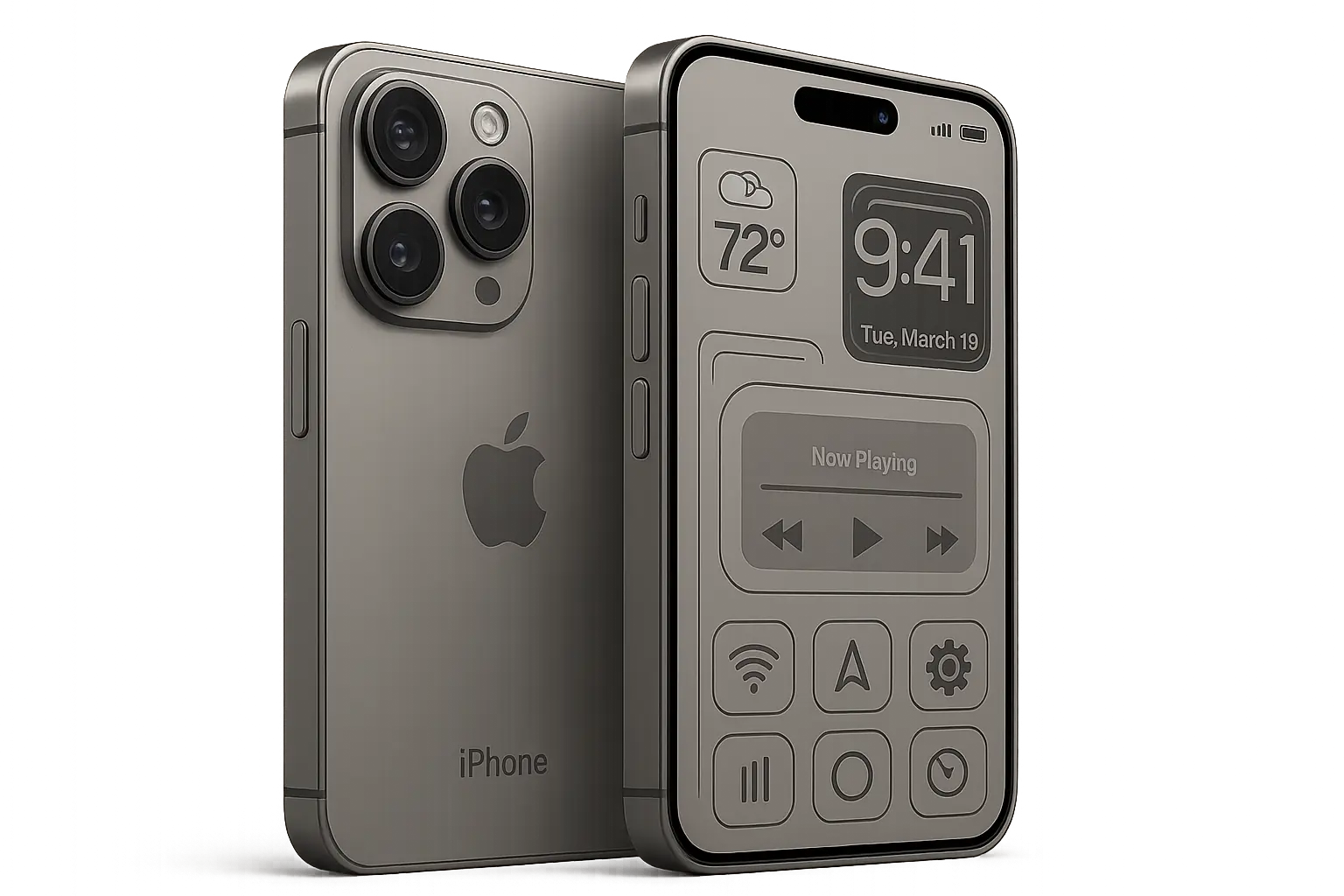
What's Coming Next
iPhone 16 Pro Series Expectations
The expected iPhone 16 Pro models will likely continue titanium construction with potential refinements to manufacturing processes and finish quality. Apple may introduce new color variations while maintaining the core Grade 5 titanium benefits.
Stay updated on developments with comprehensive coverage of iPhone 16 rumors and expected titanium enhancements.
Based on Apple's development patterns, we'll probably see manufacturing refinements that could reduce costs or enable new design possibilities while maintaining premium positioning.
Broader Titanium Availability
Apple might eventually expand titanium beyond Pro models, though cost considerations make this unlikely near-term. Titanium will probably remain a premium differentiator to maintain clear product segmentation.
We might see limited titanium elements in other models - perhaps accents or hybrid constructions - but full titanium frames will likely stay exclusive to Pro models for the foreseeable future.
Manufacturing Improvements
Future titanium iPhones may benefit from improved manufacturing processes that reduce costs while maintaining quality. These improvements might enable new design possibilities or color options while potentially reducing the premium associated with titanium construction.
Timeline |
Expected Models |
Anticipated Improvements |
|---|---|---|
2024 |
iPhone 16 Pro/Pro Max |
Refined finish, new colors |
2025 |
iPhone 17 Pro Series |
Improved manufacturing, cost reduction |
2026+ |
Potential Expansion |
Broader model availability |
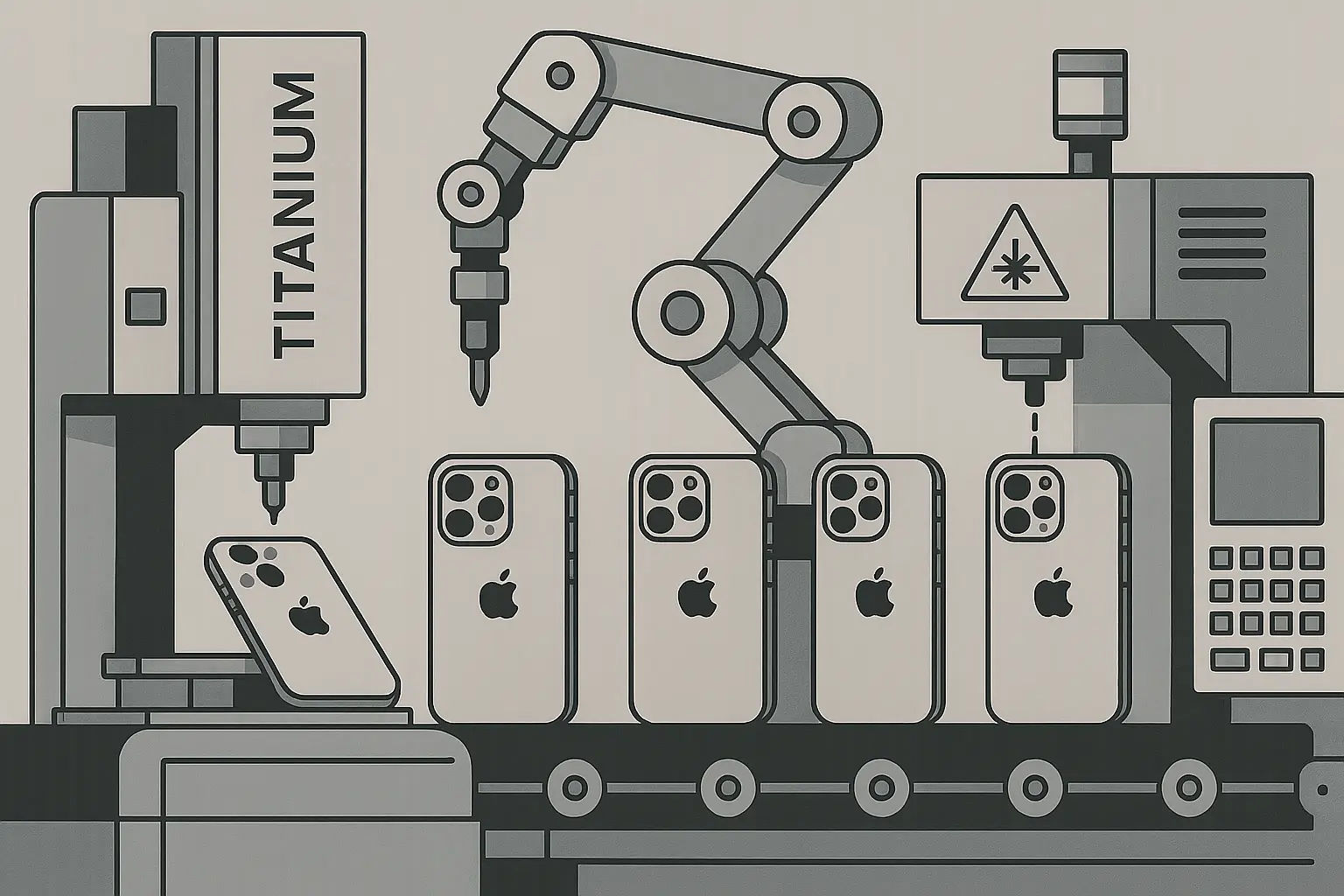
Rokform Protection Solutions for Titanium iPhones
While titanium iPhones provide exceptional base-level protection, they still benefit from comprehensive protection to reach full potential. Rokform's military-grade cases are specifically engineered to complement titanium phones' inherent durability using CNC-machined 6061 T-6 aircraft-grade aluminum components.
The combination creates perfect marriage of premium materials - titanium phones protected by aerospace-grade accessories. Rokform's MAGMAX™ magnets work flawlessly with titanium phones' non-interference properties, providing secure mounting for motorcycles, vehicles, and workspaces.
For users who've invested in titanium construction, Rokform accessories maximize those durability advantages across demanding environments. Professional users can explore specialized law enforcement phone cases designed to complement titanium iPhone durability in demanding work environments.
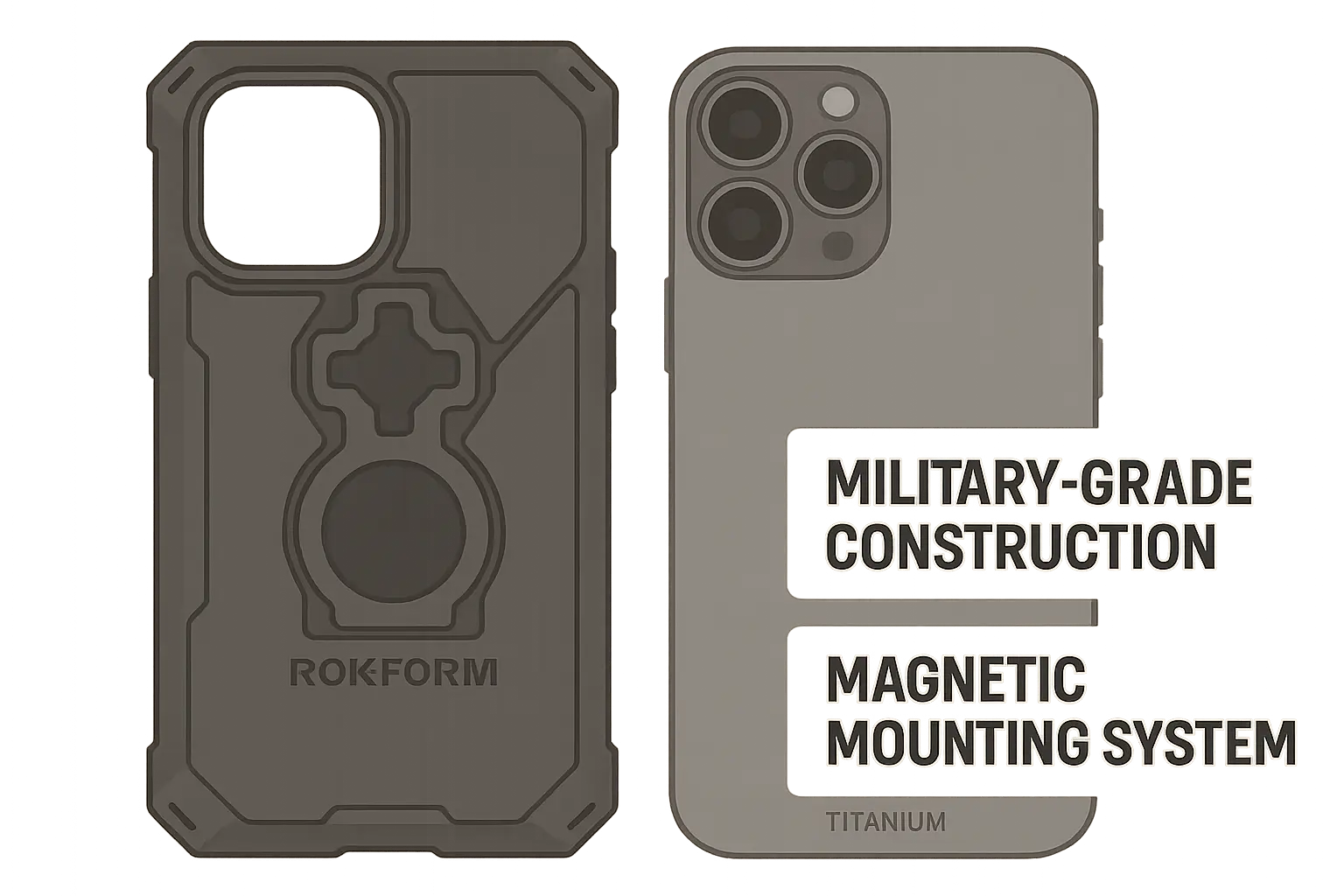
Final Thoughts
Titanium construction represents Apple's most significant material advancement in iPhone design, currently available exclusively in iPhone 15 Pro and Pro Max models. The aerospace-grade material provides superior durability, reduced weight, and premium aesthetics that justify additional cost for users prioritizing long-term value.
The reality is simple: only two iPhones feature titanium construction, and they're both expensive. But for users who keep phones multiple years or use them in demanding environments, the benefits are tangible and worthwhile.
Whether you choose current titanium models or wait for future iterations, understanding these considerations ensures you'll maximize the value of your premium device investment. The titanium iPhone isn't for everyone, but for the right user, it's a meaningful upgrade that improves the daily smartphone experience in measurable ways.







